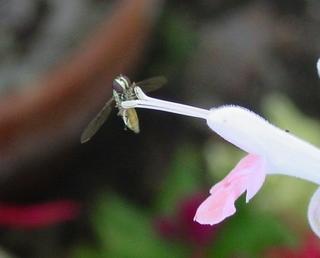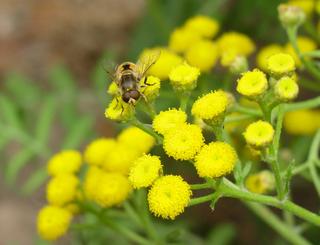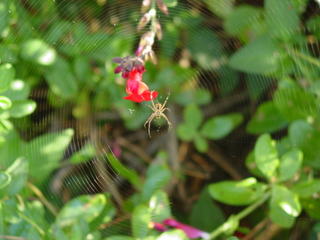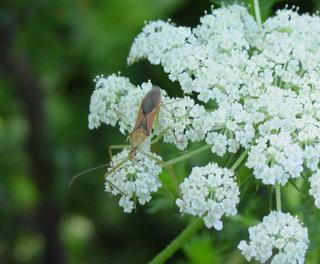 Mosquitos are flies; tsetse flies are flies; house flies are flies. But there are around 80,000 species of diptera worldwide, and the life histories of these creatures are varied and not all evil or even annoying. Many of them are what we humans regard as beneficial. (Bear in mind that on a happy day I consider house flies beneficial in that they provide food for spiders.)
Mosquitos are flies; tsetse flies are flies; house flies are flies. But there are around 80,000 species of diptera worldwide, and the life histories of these creatures are varied and not all evil or even annoying. Many of them are what we humans regard as beneficial. (Bear in mind that on a happy day I consider house flies beneficial in that they provide food for spiders.)During summer, the many species of hover flies (family Syrphidae) visit flowers to feed on nectar and pollen. They are one of the most prolific pollinators, but are often taken for bees, which they mimic in color and form. Here are a few of the species I observed in the past few weeks.
 Syrphids may look something like bees, but they distinguish themselves by (among other things) having two wings instead of four, shorter antennae, and the ability to hover motionless. You'll see bees that may be small like syrphids, but they dart or bumble from flower to flower while the flies exhibit amazing aeronautic abilities.
Syrphids may look something like bees, but they distinguish themselves by (among other things) having two wings instead of four, shorter antennae, and the ability to hover motionless. You'll see bees that may be small like syrphids, but they dart or bumble from flower to flower while the flies exhibit amazing aeronautic abilities.
Notice that two of these photos show the fly with the same flower---tanacetum vulgare or common tansy. It's a magnet for bugs of all sorts but especially flower feeders.
Syphid fly larvae (the stigmatic "maggot" is the term for fly larvae) eat aphids, so whatever you can do to encourage syrphids to like your garden or yard will pay off in free aphid control.










